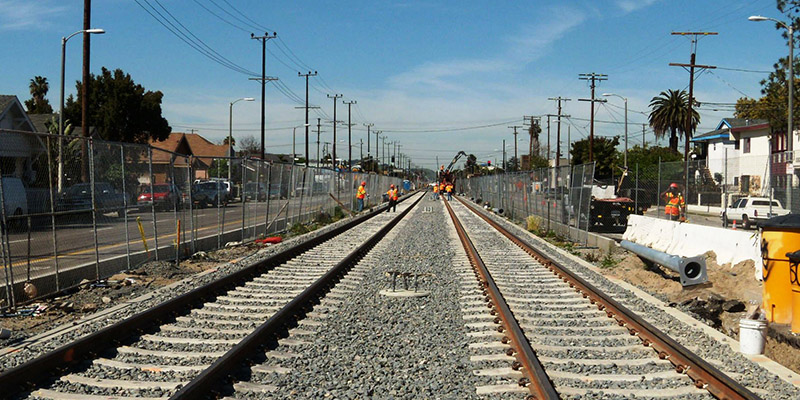
(Photo: Metro Library & Archive/Flickr)
First published in CalMatters
During the COVID-induced economic crisis, a great deal of attention has been focused on the provision of unemployment benefits and eviction moratoriums. But as important as these lifelines have been, they are not mechanisms for redressing economic inequality and structural racism.
To address structural issues, you have to focus on the actual structures. This is why radically new ways of funding infrastructure investment must be a central part of any agenda for an equitable economic recovery.
How do we actually get this done and do it in a way that these projects benefit rather than bulldoze disadvantaged communities? As detailed in our action plan “The Need for Equitable Economic Revitalization,” there are steps the state can take now to reimagine the Golden State’s recovery.
First, Sacramento should take the lead in creating a portfolio of “shovel-ready” projects statewide, helping private investors identify attractive investment opportunities matched with tangible community benefits. By then capturing economic growth arising from these projects as new revenue streams, state leaders can reinvest in communities and workers through dedicated infrastructure and workforce investments.
Second, state leaders should leverage and deploy a package of fiscal incentives to provide some “skin-in-the game” capital, attracting investors to the enhanced place-based investment strategy.
State leaders are uniquely capable of containing risk by scaffolding vitally important projects to existing credit enhancement tools, such as loan guarantees or offering special lines of credit through the I-bank reserved for project priorities like workforce development and affordable housing, school retrofits and broadband.
The availability and positioning of these incentives will send a powerful message to investors that California is dedicated to incubating a long-term recovery supported by a multiyear, multipronged “patient capital” plan designed to induce development of critical infrastructure.
Third, by aligning the recalibrated investment framework with regional plans, California can accelerate project development – that communities have already planned for – in order to realize state climate goals and upgrade resilient infrastructure in low-income, vulnerable and inland communities where improvements have long been sought.
Not only can this entrenched regional pipeline of projects promote increased employment of skilled labor through development in the short-term, in the long-term cultivating these ecosystems will enhance regional competitiveness and create more vibrant and inclusive communities across the state.
Finally, support for inclusive regional economic development planning sessions, like those spearheaded by Regions Rise Together, is needed now more than ever to develop high-road economic development and a sustainable economy. The successful Fresno DRIVE Initiative proves this approach works.
California is no stranger to the complexities of funding and implementing large-scale regional infrastructure upgrades. There are numerous examples, from the Long Beach Civic Center, to campus building upgrades at University of California, Merced, and the development of San Francisco’s Mission Bay neighborhood, where private investment has either accelerated project completion or shifted risk from taxpayers to the private sector.
California’s successful record of achieving one-off infrastructure improvements could benefit all residents across the state with improved access to housing, goods and services, quality education and high-paying jobs.
With public, philanthropic and private entities seeking a recovery catalyst, the moment to take bold action is now. State leaders must reimagine traditional economic development strategies to make up for decades of deferred maintenance and underinvestment in communities and catalyze economic growth that enhances quality of life for all Californians.
Matt Horton is director of the Center for Regional Economic and California Center at the Milken Institute.
Micah Weinberg is CEO of California Forward.
Mark Pisano is professor of the practice of public administration at the USC Sol Price School of Public Policy.

